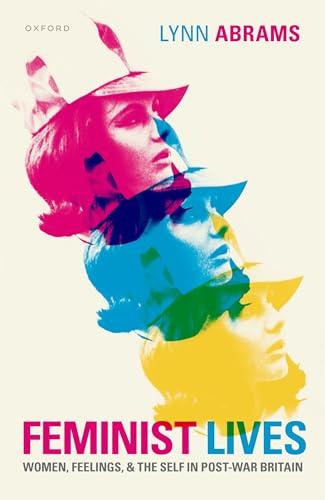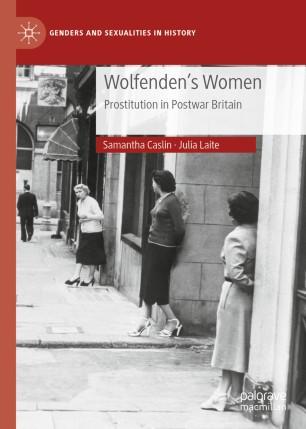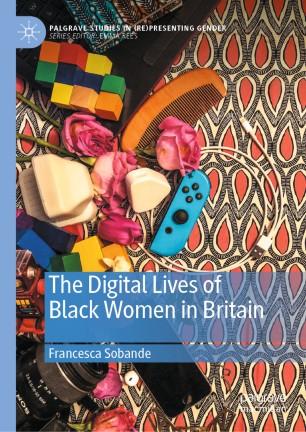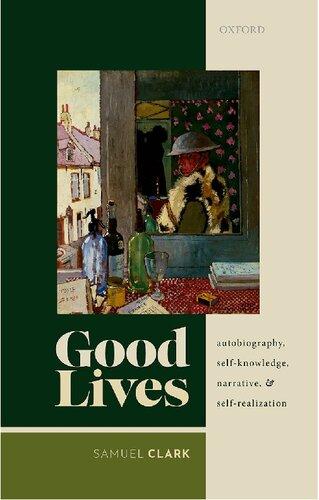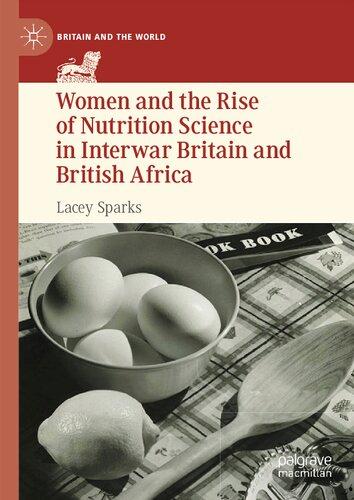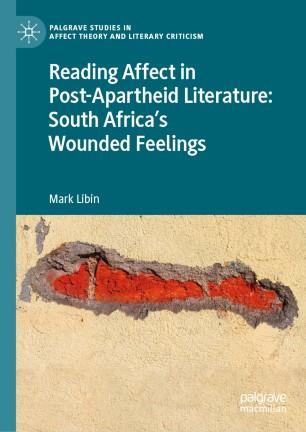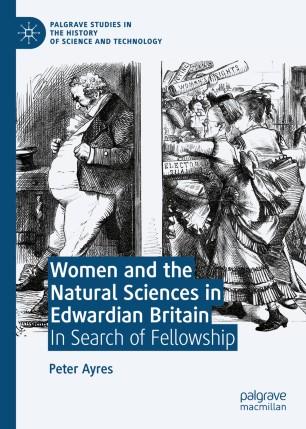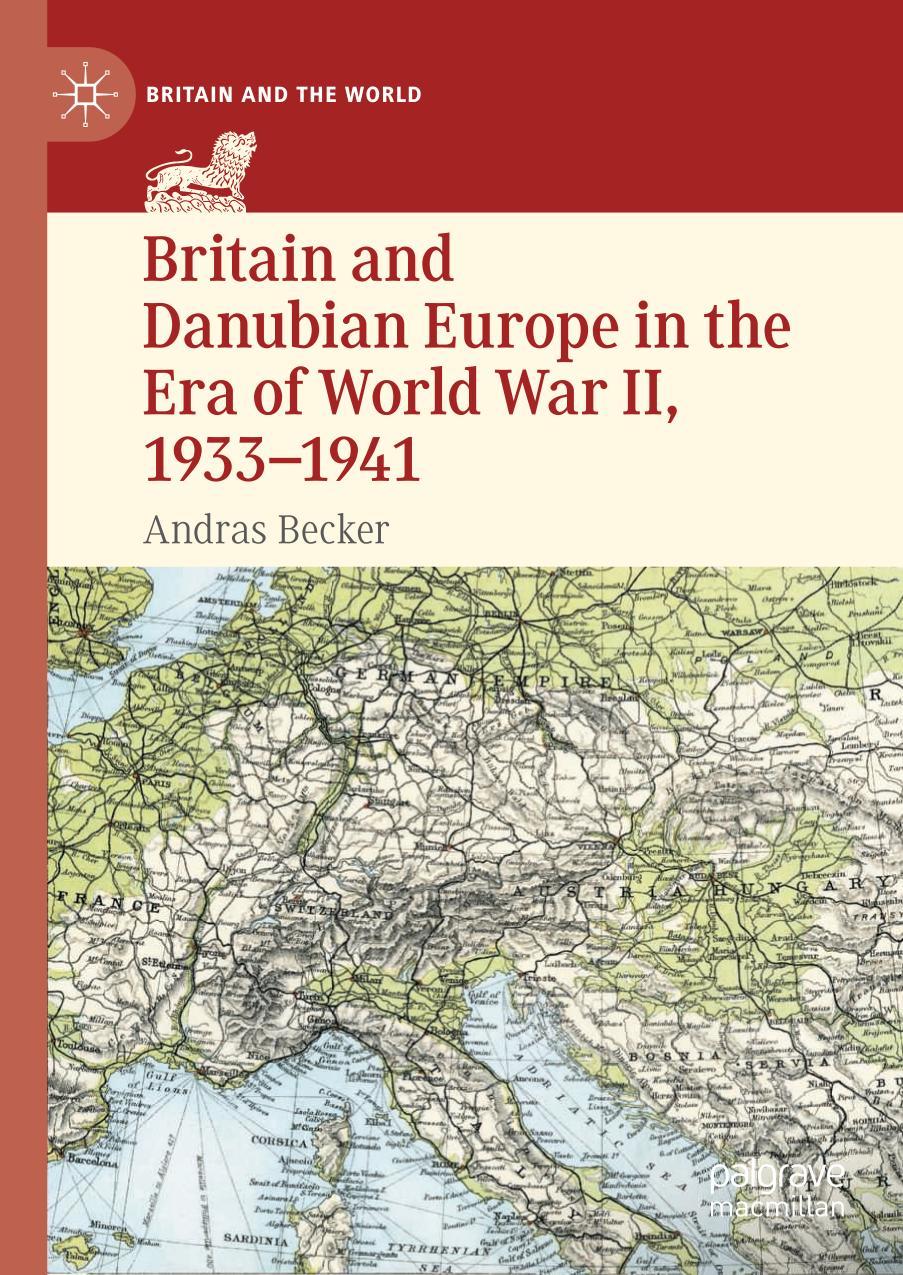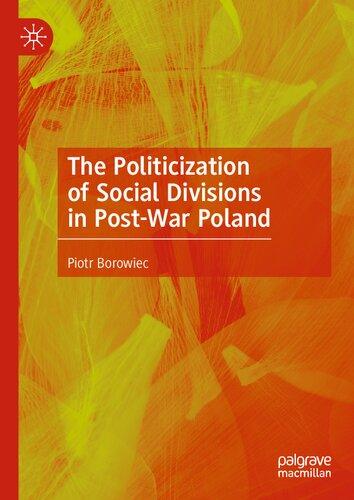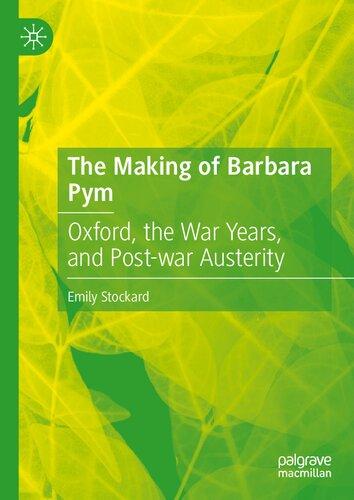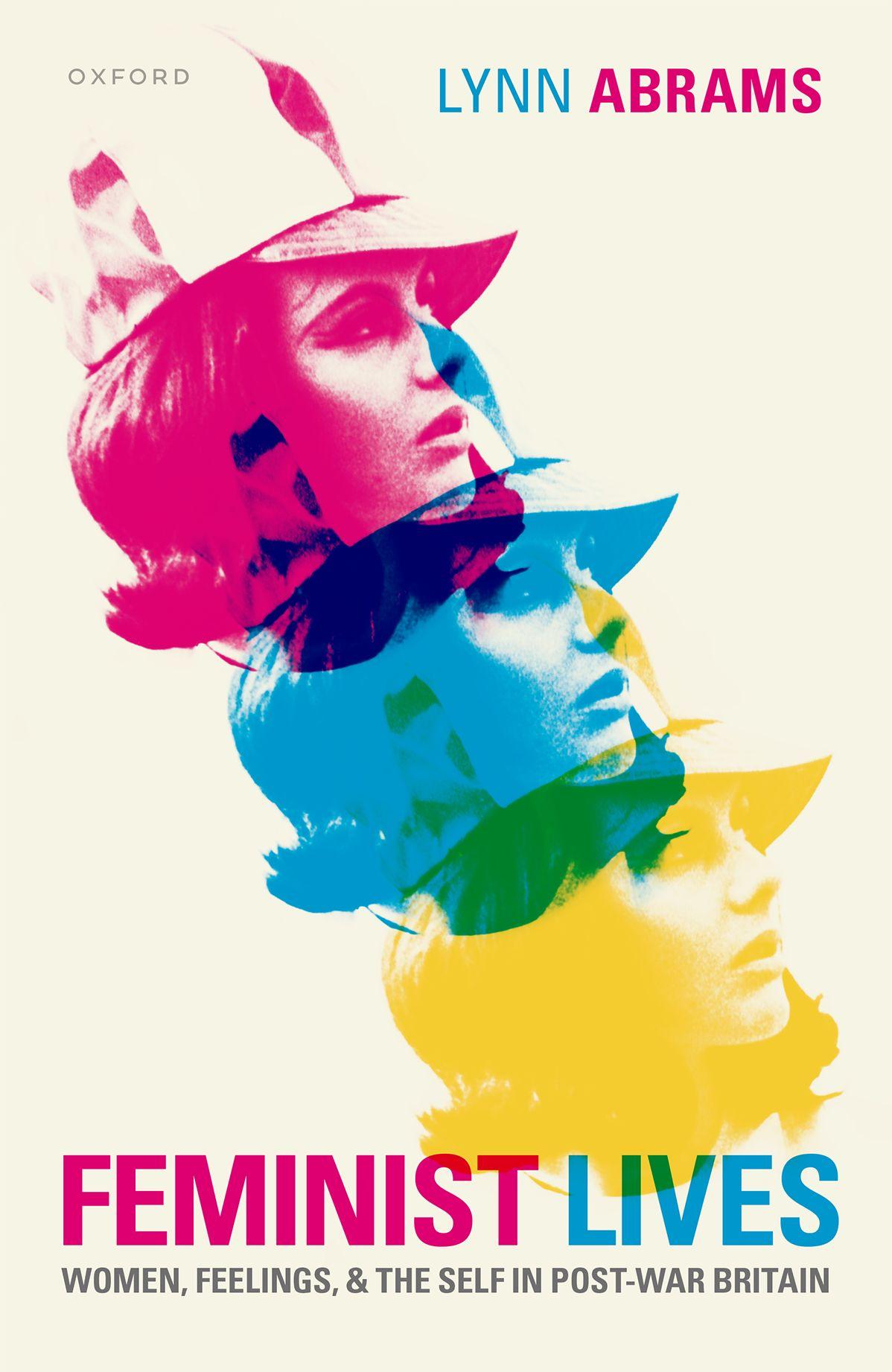1 Revolution of the Self
Introduction
Could women be feminist without feminism? Could they foster feminist activism without a movement or an ideology? Could they recraft ways of being female without a plan? Feminist Lives adopts a woman-centred approach to understand how women charted a new way of being female in the three decades before the Women’s Liberation Movement.1 Focusing on the so-called ‘transition’ or ‘breakthrough’ generation of women who were born in the long 1940s and who grew to maturity in the 1950s, 1960s, and 1970s, the argument here is that this generation of women developed the aspirational model of womanhood that then emerged after 1970 as the norm amongst women in the Global North. Feminist Lives seeks to fill ‘the feminist history gap’, countering a narrative that has for too long neglected and sometimes falsely lampooned this generation of women as fusty and failing, and as just not feminist enough. Using women’s voices as the book’s evidential and emotional core as they describe themselves, their lives, and their place in the British post-war landscape between 1945 and 1970, this book analyses the modes by which women constructed a modern self, built upon new ways of living and being.
The experiences of women like Anne sit at the heart of this version of post-war British feminist history. Born in 1947, she grew up in a comfortable though not especially well-off family in a university town in southern England. After failing the selective Eleven-Plus examination and attending a secondary modern school which had conventional gendered expectations for its girl students, she ceased education at 16 and found work as a laboratory assistant, the first of several jobs in an era of full employment. But work was not Anne’s priority; men took up most of her attention in a culture of parties, drugs, and casual sexual relationships. Although this was the era when the oral contraceptive pill became available to single women, Anne adopted a natural approach to her body. When she became pregnant she was able to access a legal abortion under the NHS, but after another unwanted pregnancy and another abortion she carried her third pregnancy to term and had her first child at the age of 24 out of wedlock with a
1 Betty Jerman, The Lively-Minded Women: The First Twenty Years of the National Housewives Register (London: Heinemann, 1981); Mary Ingham, Now We Are Thirty: Women of the Breakthrough Generation (London: Eyre Methuen, 1981).
Feminist Lives: Women, Feelings, and the Self in Post-War Britain. Lynn Abrams, Oxford University Press. © Lynn Abrams 2023. DOI: 10.1093/oso/9780192896995.003.0001
partner who refused to take either financial or caring responsibility. The welfare state came to her aid, providing her with a council house and financial support. Anne never married—unusual for her cohort—and had two more children, only picking up work again piecemeal when they went to school. As a young, single parent living on a council estate, her life course was determined by her caring responsibilities but the emerging self-help culture of the 1970s did provide respite, enlightenment, and social contact. Anne variously attended a Gestalt group, a women’s self-defence class, and the local branch of the National Childbirth Trust. The local Women’s Centre offered a place where ‘you could go and read or just be’.2
Anne described her life as having no pathway. As a young woman she participated in the permissive hippy culture but, in her words, became trapped by motherhood. As an older woman Anne pondered on a life story which, in so many ways, paralleled that of her mother’s and yet which, in crucial other ways, was characterized by freedoms unheard of amongst her mother’s generation. At the age of 17 Anne ‘felt on the edge of stuff . . . These were the sex and drugs and rock and roll times. No path to follow but wondrous things to see.’3 There seemed to be what she described as a ‘dislocation between generations’. Anne had, at one stage, hated her mother for what she represented, an emotion that drove her headlong into a different kind of life, but later on, informed by her own experiences of motherhood and parenting, she reached a better understanding of her mother.
Anne was not typical of her generation. None of the women featured in this study can claim to be representative. But the life stories Anne and all the other women who speak to us in this book chose to tell are revealing, not just because of the experiences recalled and recounted which add to our knowledge of women’s lives in this period, but because of the meanings attached to those experiences. The women who came of age in the decades following the end of the Second World War, who grew up on the eve of the emergence of the Women’s Liberation Movement, and who have been described variously as the breakthrough, transition or welfare-state generation, were better educated and had more sexual and personal freedoms than their mothers; they witnessed the steady expansion of opportunities to work, to travel, and to be oneself.4 And part of that opening up of the public and civic landscape for women was a willingness to narrate their lives as individuals with a legitimate claim to a place in the historical record. Women of this generation, those born roughly between 1938 and 1950, are able to tell their life stories with themselves at the centre, as the heroes rather than the bystanders. They understand that they are the women referred to when
2 Interview with Anne.
3 Personal correspondence with Anne.
4 Jerman, Lively-Minded Women; Ingham, Now We Are Thirty; Eve Worth, The Welfare-State Generation. Women, Agency and Class in Britain since 1945 (London: Bloomsbury, 2021).
historians write about the massive social changes of those decades: it was they who wore the mini-skirts, who made it to college and university, who had sex before marriage, who limited their families, who went back to work when their children had grown, and who expected more of their relationships, albeit some had to wait longer than others.5 And in talking about their lives on the record they further contribute to the creation of a collective biography of a generation that sees itself as treading a new path.
The historical shifts and revolutions experienced and enacted by this generation are now the subject of major interpretations of the late twentieth century. Clothing, mobility, sexuality, the expressive and emotional turns, radical politics, the relationship between work and family, between self and family and the individual and the state, all feature women who recognize their part in the story because they were a part of it. Now in their seventies and eighties, they are both primary sources and historical actors. Through oral history interviews and other forms of personal testimony brought forth in a confessional culture that legitimizes first person accounts, they provide retrospective versions of lives lived through a period of almost unprecedented opportunity.
Feminist Lives pivots around the stories of individual women who have narrated—in oral histories, in published autobiography and other forms of personal testimony—narratives which reflect upon generation, gender and change in this formative era. This book argues that until the 1950s, there was no widespread and socially acceptable idea of the autonomous woman. Some of course blazed a trail, performing models of womanhood incorporating careers and family and for some, unconventional love lives, but they were in the minority.6 Most women’s lives had been destined by society’s rather rigid expectations regarding marriage and motherhood. Most women were constrained by limited educational opportunity and narrow economic prospects as well as conservative social attitudes towards the body and sex. Their self-fulfilment was deemed to be tied to their social role—as wife, mother, homemaker. After scores of decades in roughly the same state, young women’s opportunities rapidly changed. Though hitherto somewhat derided by those who formed the later Women’s Liberation Movement, the autonomous female self of late modernity was fashioned first amongst this post-war generation. They were the first to benefit in significant numbers from the democratization of secondary education and the expansion of higher
5 I have used both ‘generation’ and ‘cohort’ to describe this group of women. Whilst cohort is a more accurate description of a group defined by their dates of birth, there is a case to be made for describing this group as a generation, framed by their shared responses to social change, not least because many of them regard themselves as belonging to a defined generation, distinct from that of their mothers and the generation of their daughters.
6 See D.J. Taylor, The Lost Girls: Love, War and Literature, 1939–51 (London: Constable, 2019); Rachel Cooke, Her Brilliant Career. Ten Extraordinary Women of the Fifties (London: Virago, 2014).
education and they had rising expectations.7 They were also the beneficiaries of post-war welfare reform, housing improvement, and technological change, and felt a widening acceptance of women’s economic autonomy and a gradual loosening of moral constraints upon them. They fought for and achieved power over their own bodies through fertility control, abortion, new freedoms in sexual life, and a refashioning of relationships and domestic and family structures.8 They established new patterns of working and new ways of seeing themselves.9 This was a time of personal transformation for many, characterized by the embrace of opportunity, independence, and autonomy. In contrast with the lives of their mothers’ generation which were shaped by institutional impediments and expectations of service, subservience, self-sacrifice, and self-control, their daughters made the journey from ‘home-makers’ to ‘self-makers’—albeit not without struggle and not all at the same pace. This book will focus on this pivotal moment in the twentieth century for women’s experience and women’s subjectivity. It argues that women, individually and collectively, were agents of change in their own lives. And that change occurred because women were liberated from the emotional limitations experienced by those who preceded them. Feelings were legitimately expressed in the post-war decades and women made their feelings visible to themselves and to one another, a process that turbo-charged action. That action was the key to self-realization and fulfilment.
Feminist Lives is a study in close-up. The focus is primarily on individual women and their interpretations of what happened to them set in a wider landscape. Their understanding of those experiences, both contemporaneously and in retrospect, provide the starting point, an approach ‘from the bottom up’ which takes seriously women’s opinions on what was important and which assigns meaning to everyday acts. Women’s narratives determine the critical points and themes which may challenge some of the interpretations previously identified by historians. The everyday achieves more prominence than the themes that commonly feature in characterizations of this period such as sexuality,
7 Carole Dyhouse, No Distinction of Sex: Women in British Universities, 1870–1939 (London: UCL Press, 1995); Peter Mandler, The Crisis of the Meritocracy. Britain’s Transition to Mass Education since the Second World War (Oxford: Oxford University Press, 2020).
8 Hera Cook, The Long Sexual Revolution: English Women, Sex and Contraception 1800–1975 (Oxford: Oxford University Press, 2004); Zoe Strimpel, Seeking Love in Modern Britain: Gender, Dating and the Rise of the ‘Single’ (London: Bloomsbury, 2020); Callum G. Brown, Religion and The Demographic Revolution: Women and Secularisation in Canada, Ireland, UK and USA since the 1960s (London: Boydell, 2012); Claire Langhamer, The English in Love: the Intimate Story of an Emotional Revolution (Oxford: Oxford University Press, 2014); Marcus Collins, Modern Love: An Intimate History of Men and women in Twentieth Century Britain (London: Atlantic Books, 2003).
9 Helen McCarthy, Double Lives: a History of Working Motherhood (London: Bloomsbury, 2020); McCarthy, ‘Women, Marriage and Paid Work in Post-War Britain’, Women’s History Review 26:1 (2017), pp.46–61; Eve Worth and Laura Paterson, ‘ “How is She Going to Manage with the Children”: Organisational Labour, Working and Mothering in Britain c.1960–1990’, Past and Present, Supplement 15 (2021), pp.318–43; Dolly SmithWilson, ‘A New Look at the Affluent Worker: The Good Working Mother in Post-War Britain’, Twentieth Century British History 26:3 (2015), pp.424–49.
permissiveness, alternative lifestyles, radical politics, and activism.10 Oral history in particular has become a methodological mainstay of social history, still throwing up material that would be difficult if not impossible to find in written sources.11 It is here that we uncover the meaning of the banal to counter the contemporary and historical preference for the spectacular. But the interrogation of narratives for the meaning those narrators ascribe to experience permits the historian to critically consider the applicability of universal themes and overarching frameworks, especially as they apply to women’s experience.
This is an episode that we might understand as women’s liberation’s pre-history, of that generation of women who generally frame their life stories within a feminist or liberationist discourse of equality and opportunity but for whom feminism, in its ideological and activist guises, was like a shadow in the background of their lives. The text of this book burrows into that outlook and the rhetoric they used. This is the feminist generation in an era of British history which was shaped by feminism in terms of a growing acceptance of the basic tenets of gender equality. Many amongst this generation did engage in forms of activity not explicitly defined as feminist or not explicitly part of the Women’s Liberation Movement but certainly with the objective of improving their own lives and those of women more widely. Organizations such as the National Housewives Register, the PreSchool Playgroup movement, and the National Childbirth Trust addressed the tensions between motherhood and career, being a wife and being a professional, being a person and a woman, and offered women a place to nurture themselves, to develop networks of like-minded women and to grow. Involvement in childcare provision, community activism, and campaigning issues such as the plight of single mothers, post-natal depression and peace were all signs of a generation of women pursuing a path of independent thinking and personal autonomy. These are the kinds of thoughts women had and which emerge from the evidence. This book seeks to write in the same register.
The Post-War Landscape
The re-imagining of the self undertaken by women since the 1950s is a process that actively, imaginatively, and emotionally intersects with histories of late
10 For example, Frank Mort, Capital Affairs: London and the Making of the Permissive Society (2010); Celia Hughes, Young Lives on the Left: Sixties Activism and the Liberation of the Self (Manchester: Manchester University Press, 2015); Jonathan Green, All Dressed Up: The Sixties and the Counterculture (London, Pimlico, 1999).
11 Studies that focus on sex and sexuality are the clearest examples. For instance, Hannah Charnock, ‘Girlhood, Sexuality and Identity in England, 1950–1980’, PhD thesis, University of Exeter, 2017; J. Hockey, V. Robinson, and A. Meah, Cross-Generational Investigation of the Making of Heterosexual Relationships, 1912–2003. Colchester, Essex: UK Data Archive, October 2005. SN: 5190, http://dx.doi.org/10.5255/UKDA-SN-5190-1 [hereafter UKDA SN 5190].
twentieth-century Britain on a number of fronts. The overarching vectors of post-war reconstruction followed by the key components of ‘modern Britain’ are well known. The rejection of organized religion, especially by women, and particularly its moral stance on matters concerning sex, improvements in the building blocks of everyday life from the built environment and especially housing to wider affluence and being able to participate in the consumer revolution, the impact and experience of migration, the reform of education, especially comprehensivization and the expansion of higher education, changes in work organization and practices and the revolution in popular culture.12 Taking a different tack, studies of this generation through the prism of the welfare state, motherhood, childcare, and the labour market have emphasized the need to document and understand women’s experiences in order to assess the impacts of policy, ideology, and provision.13 In so doing they demonstrate that women’s experience did not align with that of men. Social class and gendered role expectations, and policies and structures that did not dismantle these, continued to shape women’s decisions and opportunities. The poor provision of childcare in the 1960s and 1970s is a prime example. And despite major reforms to social provision—the establishment of the NHS, the 1944 Education Act and 1945 Education (Scotland) Act, and the provision of council housing—which in theory and in ambition improved the opportunities and wellbeing for girls and women, it is now clear that the welfare state ‘could be both a liberation and a constraint’ when looked at over the long term.14 General claims about educational opportunity and social mobility have been overstated. Women’s mobility patterns do not mirror those of men’s in terms of experience, opportunity and timing, and this is particularly true of working-class women who were destined for the factory or Woolworths rather than a career or higher education when they left school and who seized the opportunities denied them at 15 later in life.15 And when extending the story beyond the 1970s, even those women who had benefited from the growth of job opportunities in the fields of health and welfare were negatively affected by de-professionalization.16
12 The literature on the social history of post-war Britain is extensive. Some key works relevant to this study include: Callum G. Brown, The Death of Christian Britain: Understanding Secularisation 1800–2000 (London: Routledge, 2001); Becky E. Conekin, Frank Mort, and Chris Waters (Eds), Moments of Modernity? Reconstructing Britain 1945–1964 (London: Rivers Oram, 1999); Jon Lawrence, Me, Me, Me: The Search for Community in Post-War England (Oxford: Oxford University Press, 2019); Clair Wills, Lovers and Strangers: An Immigrant History of Post-war Britain (London: Penguin, 2017); David Kynaston, Modernity Britain. Book One: Opening the Box 1957–59 (London: Bloomsbury, 2013); David Kynaston, Modernity Britain. Book Two: A Shake of the Dice 1959–62 (London: Bloomsbury, 2014).
13 Worth, Welfare State Generation; McCarthy, Double Lives; Laura Paterson, ‘Women and Paid Work in Industrial Britain’, PhD thesis, University of Dundee, 2014.
14 Worth, Welfare State Generation, p.161.
15 Selina Todd, The People: The Rise and Fall of the Working Class (London: John Murray, 2014), pp.225–6 and passim
16 Peter Mandler, ‘Educating the Nation III: Social Mobility’, Transactions of the Royal Historical Society 26 (2016) pp.1–23; Steph Lawler, ‘Getting Out and Getting Away: Women’s Narratives of Class Mobility’, Feminist Review 63:1 (1999), pp.3–24; Worth, Welfare State, pp.127–31.
The experiences of women from non-white and non-Christian communities encountered another layer of discrimination on the grounds of race and religion as well as, for some, obstacles to personal autonomy within their own families and cultures.
Alongside the material account of the twentieth century, there is a parallel version in which a new concept of the self operates as the primary lens through which change is interpreted.17 New ways of understanding the self in relation to the world, influenced by the psychological sciences permeating popular culture in the post-war decades, were manifested in the ways in which people lived their lives and also in modes of self-expression.18 Increasingly people sought out opportunities for individual growth and self-development, what Steedman describes as the ‘valorization of the self’, through education, work and intimate relationships; self-fulfilment meant acting on feelings rather than sublimating desires to social expectations.19 And while relatively few people came into direct contact with the new psychological sciences, from the 1960s their influence pervaded the social realm in the domains of health, education, and social and economic life as well as at the level of the everyday, from women’s magazines with their relationship advice to didactic literature on childcare and marriage. The ‘psychological subjects’ of Thomson’s analysis embrace the broad insights of the psy-sciences which, in his words, ‘provided a language and topography of self’ eroding the culture of deference and emotional restraint, enabling individuals to harness something within themselves in the pursuit of self-realization.20
These two versions of post-war Britain, the material and the psychological, have still to be conjoined in a sustained way. The revolution in the ways in which the self could be expressed and understood features in histories of activism amongst the radical left, feminists and campaigners for gay rights, demonstrating how individual subjectivity and collective experience could be the impetus for change, but it is less visible elsewhere.21 In histories of education, of changes in the built environment and even of the revolution in sexual ethics and behaviour, attention to how individuals’ self-understanding was both instrumental in the changes and impacted by them, remains underdeveloped. And yet self-expression
17 See Mathew Thomson, Psychological Subjects: Identity, Culture and Health in Twentieth Century Britain (Oxford: Oxford University Press, 2006).
18 See Chris Waters, ‘Disorders of the Mind, Disorders of the Body Social’ in Conekin et al. (Eds), Moments of Modernity, pp.13–51.
19 Carolyn Steedman, ‘Writing the Self: the End of the Scholarship Girl’ in Jim McGuigan (Ed.), Cultural Methodologies (London: Sage, 1997), pp.106–25.
20 Thomson, Psychological Subjects, p.8; Hera Cook, ‘From Controlling Emotion to Expressing Feelings in Mid-Twentieth-Century England’, Journal of Social History 47:3 (2014), pp.627–46.
21 See Hughes, Young Lives; Jonathan Moss, Women, Workplace Protest and Political Identity in England, 1968–1985 (Manchester: Manchester University Press, 2019); Lucy Robinson, Gay Men and the Left in Post-War Britain: How the Personal Got Political (Manchester: Manchester University Press, 2007).
and opportunities for self-fulfilment pervaded all areas of everyday life in postwar Britain, from the music club to the workplace, the boutique to the bedroom, the housing estate to the classroom.22 Moreover, the liberation of the self was well underway before women’s liberation activists made social and political change contingent upon new feminist subjectivities. The testimony featured in this book provides experiential and emotional accounts of social change as it manifested in everyday life. The biographical turn in historical writing enables us to understand subjective responses to material and discursive changes concerning the management of bodies and minds, the contours of personal relationships, the reach of the state, the impact of technology, the reform of education, the structure of the labour market, and the landscapes of social and geographical mobility. It also identifies where women themselves effected those changes. Feminist Lives provides the first sustained interrogation of the ways in which new selves were formed through these processes and in turn how the processes of change were driven, in part, by new ways of being amongst this generation of women.
Where there has been a deeper consideration of where new modes of selfhood were formed in relation to post-war social and political change is in relation to activism in radical and left politics including feminism. Highly dependent on memoirs and oral testimony from ‘those who were there’, studies of these milieux have yielded important methodological and historical understandings of the interplay between emotion, memory, and subjectivity in a context of collective action.23 As studies of Sixties and Seventies activism—both left-wing politics and feminism—demonstrate, the self was being consciously constructed at the time in new spaces (such as universities, feminist and radical bookshops, squats, the Workers Education Association, anti-racism groups), through new practices (such as newsletter production, banner and placard-making, consciousnessraising) and it came to be reconstructed in retrospective narratives about that time.24 This is a group which self-consciously, then and now, aligned beliefs with
22 Steedman, ‘Writing the Self’; Lynn Abrams, Barry Hazley, Ade Kearns, and Valerie Wright, Glasgow: High Rise Homes, Estates and Communities (London: Routledge, 2020), especially pp.36–65; Judith Attfield, Bringing Modernity Home. Writings on Popular Design and Material Culture (Manchester: Manchester University Press, 2007); Penny Tinkler, ‘Are You Really Living?’ If Not, ‘Get With It!’, Cultural and Social History, 11:4 (2014), pp. 597–619.
23 Hughes, Young Lives; Luisa Passerini, Autobiography of a Generation: Italy 1968 (Middletown, CT: Wesleyan University Press, 1996); Robert Gildea, Mark James, and Annette Warring (Eds), Europe’s 1968: Voices of Revolt (Oxford: Oxford University Press, 2013); Sheila Rowbotham, Promise of a Dream: Remembering the Sixties (London: Allen Lane, 2000); Sheila Rowbotham, Daring to Hope: My Life in the 1970s (London: Verso, 2021).
24 Hughes, Young Lives cites one respondent using the interview to reclaim ‘a legitimate space for his past and present revolutionary selves’, p.286. See also Lucy Delap, ‘Feminist Bookshops, Reading Cultures and the Women’s Liberation Movement in Great Britain, c.1974–2000’, History Workshop Journal 81 (2016), pp.171–96; Emily Flaherty, ‘The Women’s Liberation Movement in Britain 1968–1984: Locality and organisation in feminist politics’, PhD, University of Glasgow, 2017; Daniel Renshaw, ‘The Violent Frontline: Space, Ethnicity and Confronting the State in Edwardian Spitalfields and 1980s Brixton’, Contemporary British History 32 (2018), pp.231–52.
identity. Their political consciousness and their active involvement drive a self-narrative that positions their political awakening as a pivotal moment—a rupture—which frames everything that happened afterwards and which helps to interpret experiences prior to the awakening.25 ‘I met people and read books that gave names to these things that said, there are such things as patriarchy, there is sexism, there is oppression’, explained a feminist activist. ‘So it gave me the language and the kind of framework to understand what all these kind of amorphous feelings and anger and resentment were about.’26
Those whose self-identity is framed by their political or activist past, have a common language and set of cultural reference points—an epistemology— comprising key texts, significant campaigns, or events that bind the individual into a collective narrative.27 They are visible to one another. These narratives are shaped by memories, networks, and friendships originating in the 1960s, 1970s, and 1980s and which continue to sustain a shared culture, summed up in the sentiment expressed by one former Trotskyist some decades later on her involvement with an Occupy protest: ‘they are my people’.28 In their life narratives individuals translate lived experience into a distinctive genre often serving to shore up a myth of collective experience and as testimonials to a belief in a set of fundamental principles which have the purpose of reaffirming the narrator’s self-identification and sustaining the discursive narrative for posterity. Moreover, those involved in activist groups tend to associate doing, and especially collective action, with conferring identity or selfhood. Hughes describes the activist ‘scene’ or subculture amongst the new left which combined the personal and political. Commitment to a political cause was conjoined with new styles of relationship and forms of living. The mutual reinforcement of these two parts of the self expresses itself in a rather self-referential narrative which makes connections within the group or movement but rarely beyond it, and a sense of self that had difficulty situating itself in the present.29 These narratives can be exclusive, denying those who did not share in the practices the possibility of belonging to the same narrative community. What has been missing from existing accounts of women’s lives in this period is a recognition that new selves could be discovered and new ways of being could be experienced alongside or within conventional social structures such as marriage and family rather than in opposition to them. Beyond the spaces we think of
25 On the notion of rupture in feminist narratives see Passerini, Autobiography and Maud Anne Bracke, Women and the Reinvention of the Political. Feminism in Italy, 1968–1983 (London: Routledge, 2014), p.24 and p.209.
26 Glasgow Women’s Library: Witness at Scottish Women’s Liberation Movement Workshop (transcript), Edinburgh 2009.
27 See Margaretta Jolly, Sisterhood and After: An Oral History of the UK Women’s Liberation Movement, 1968–Present (Oxford: Oxford University Press, 2019), pp.35–9. On the importance of the written word for the formation of a collective consciousness see Phillida Bunkle, ‘The 1944 Education Act and Second Wave Feminism’, Women’s History Review 25:5 (2016), pp.791–811.
28 Cited in Hughes, Young Lives, p.287. 29 Hughes, Young Lives, p.287.
as the radical alternatives to stifling suburban immobility, women were striving to carve out ways of being that offered a more gradual route to self-fulfilment and a quieter mode of self-expression. As Cohen has argued, change can come about quietly, gradually, and behind closed doors as conventional social mores were stretched.30 This book argues that women in Britain in this era reimagined the concept of the modern female life course which was more complex, fluid, and multi-faceted than had been experienced hitherto. The fact that the majority married and pursued what looked like conventional lifestyles belies the psychodramas which accompanied this. Moving in with a boyfriend, leaving young children in a playgroup, attending a coffee morning or yoga class, returning to college, taking a part-time job: these are part-and-parcel of post-war women’s lives which, incrementally, paved the way for a new model of the female life course in which all of these unspectacular activities were normalized.
The tendency in the literature to privilege activism over quiet, quotidian selftransformation echoes the condescension of those who have regarded women’s self-help activism as lacking the thoroughgoing political critique that was to be developed by women’s liberation in the early 1970s and thus not sufficiently radical to be considered part of the post-war feminist narrative.31 Self-help or ‘do-ityourself’ initiatives as they were dubbed, which addressed concerns around childbirth, motherhood, childcare, and the isolation of housewives, have been seen as reinforcing rather than overturning the subordination of women and thus not integral to dominant contemporary and historical narratives of post-war womanhood and especially of feminism.32 The result is that organizations that addressed the tension between women’s maternal and domestic roles on the one hand and self-expression and self-development on the other hand have, so far, not been integrated into interpretations of post-war change.33 Studies of the less oppositional spaces which, since the inter-war years, had offered women opportunities to grow as critical citizens such as the traditional women’s organizations such as the Women’s Institute, Townswomen’s Guild and Mothers’ Union, political parties, and NGOs, have shown how they could enable women’s agency in a public and private sense, promoting ‘active citizenship’ whilst offering members personal fulfilment without challenging normative expectations of gender roles.34
30 Deborah Cohen, Family Secrets: The Things we Tried to Hide (London: Penguin, 2014), pp.xv–xvi.
31 This approach is adopted by Elizabeth Wilson in Only Halfway to Paradise: Women in Post-war Britain: 1945–68 (London: Tavistock Publications, 1980) and Anna Coote and Beatrix Campbell, Sweet Freedom. The Struggle for Women’s Liberation (London: Picador, 1982).
32 It was Mary Stott, editor of the Guardian’s women’s page between 1957 and 1972 who described the self-help groups as ‘do-it-yourself’ organizations. Both terms will be used here. Mary Stott (Ed.), Women Talking: An Anthology from the Guardian Women’s Page 1922–35 1957–71 (London, 1987), p.225.
33 Lynn Abrams, ‘The Self and Self-Help: Women Pursuing Autonomy in Post-War Britain’, Transactions of the Royal Historical Society 29 (2019), pp.201–21.
34 Studies include: Caitriona Beaumont, Housewives and Citizens: Domesticity and the Women’s Movement in England, 1928–1964 (Manchester: Manchester University Press, 2013); Sue Innes, ‘Constructing Women’s Citizenship in the Inter-War Period: the Edinburgh Women’s Citizens’
Yet for the post-war generation, such organizations with conventional hierarchies and modes of operation had less appeal than bottom-up, self-organized activism which could bend to women’s own interpretation of their needs. As we shall see, though, women’s own accounts are emphatic about how personal self-fulfilment and self-realization was often achieved through their involvement in parafeminist activities, voluntary organizations and further and higher education later in life. These actions were not selfish or neutral in their effects. These empathetic communities, whether they be the local National Childbirth Trust group, a Workers’ Education Association or keep-fit class, provided spaces for emotional expression rarely present within pre-existing organizations and which, in turn, drove change in individual lives and also the lives of women collectively.35 Change, in this woman-centred narrative, occurred stealthily and without much fuss. Organizations dedicated to relieving women’s loneliness by meeting in someone’s sitting room, drinking coffee and engaging in intelligent discussion were unlikely to ruffle any feathers or attract anything other than benign comment. Notwithstanding the moral panics concerning changes in young people’s behavioural codes, at the individual level women—and men—for the most part negotiated their way through life experiences in an incremental rather than revolutionary fashion. This though has translated into the muting of personal stories about these experiences. It is easy to talk about mini-skirts and music for example, because these themes feature prominently in popular representations of the period. But, counterintuitively, it is harder to talk about marriage, motherhood, the everyday. And the absence of a recognizable or publicly acknowledged history of para-feminist activity, that is the activities that went on beyond and around recognizable campaigns concerning women’s rights, has had the consequence of silencing those narratives that have been labelled ‘not feminist enough’.36 The magnetism of the Women’s Liberation Movement for historians and in popular representations of this period leaves rather cloudy what was happening to the women who matured between c.1957 and c.1975 for whom feminism was something yet to happen or in the background, or a bit scary or something that other people did.37
Association’, Women’s History Review 13:4 (2004), pp.621–47; Pamela Graves, Labour Women: Women in British Working-Class Politics, 1918–1939 (Cambridge: Cambridge University Press, 1994); Pat Thane, ‘The Women of the British Labour Party and Feminism, 1906–1945’, in H.Smith (Ed.), British Feminism in the Twentieth Century (Aldershot: Edward Elgar, 1990), pp.124–43.
35 See, for example, Katrine-Louise Mosely, ‘Slimming One’s Way to a Better Self? Weight Loss Clubs and Women in Britain, 1967–1990’, Twentieth Century British History 31:4 (2020), pp.427–53; Eilidh Macrae, ‘Exercise in the Female Life-Cycle in Britain, 1930–1970 (Basingstoke: Palgrave, 2016).
36 Lynn Abrams, ‘Talking About Feminism: Reconciling Fragmented Narratives With the Feminist Research Frame’, in K. Srigley, S. Zembrzycki, and F. Iacovetta (Eds), Beyond Women’s Words: Feminisms and the Practices of Oral History in the Twenty-First Century (New York: Routledge, 2019), pp.81–94.
37 Mary Ingham argues that the majority of women were too busy for women’s liberation and that the ‘real concerns of the women’s movement were inaccessible to ordinary housewives’ and the message was too radical ‘for women to relate it to their own problems’. Ingham, Now We Are Thirty, p.132, p.138, and p.140.
The long 1960s has, understandably, acted as a flame attracting historians who see this period as marking a ‘moment of modernity’, not least in terms of subjective expression, whether that be through sexual activity, left-politics, or popular culture.38 More recently, however, historians have identified the relative affluence of the mid-century decades as fuelling the liberationist demands of the 1960s and 1970s, arguing for a relatively long period in which change was effected and encompassing women born in the inter-war decades as well as their daughters. Lawrence, drawing on ‘ordinary people’s thoughts and feelings’ to chart attitudes towards community since the end of the Second World War, identifies a shared commitment to progress across the post-war decades, only weakened in the 1970s and 1980s. Langhamer situates the origins of the emotional revolution in the 1920s and highlights a 50-year period until the 1970s as a hiatus, a moment of modernity encompassing new ways of conceiving of and enacting the self, primarily through new forms of intimacy. And Selina Todd charts the rise and fall of working-class fortunes from 1910 to the 1970s, arguing for a step-change after the Second World War in respect of the realization of aspiration.39 Todd makes a case for the importance of attending to the working lives of girls and women since the inter-war decades in explanations of social, political, and economic change.40 This book argues for a sharper break. Personal testimony is crucial in delineating the ways in which those born in the 1940s conceived of and experienced their lives in very different ways from those born just a few years earlier. They lived lives ‘utterly at odds’ with what they had been socialized to expect.41 They enacted the rupture located in the long Sixties, encompassing a confluence of social, economic, and cultural changes: secularization, declining fertility, rising educational achievement, growing labour market participation, and changing attitudes to sex and identity.42 In contemporary and retrospective testimony they are clear that they saw the world through a different lens. They were a group for whom the educational and professional outlook was comparatively bright, enabling them to construct a lifestyle and outlook very different to that experienced by those born in the 1920s and 1930s.
Of course structural changes impacted on women unevenly according to social class in particular, although geography, religion and race and ethnicity also had a bearing. And striving for autonomy within a framework that still contained many structural impediments such as the absence of childcare, wage inequality, and gendered role expectations at home and at work, intensified existing issues like
38 See Becky Conekin, Frank Mort, and Chris Waters (Eds), Moments of Modernity: Reconstructing Britain 1945–1964 (London: Rivers Oram, 1999).
39 Lawrence, Me, Me, Me; Claire Langhamer, The English in Love: The Intimate Story of an Emotional Revolution (Oxford: Oxford University Press, 2013); Selina Todd, The People: The Rise and Fall of the Working Class (London: John Murray, 2014).
40 Selina Todd, Young Women, Work and Family 1918–1950 (Oxford: Oxford University Press, 2005).
41 Ingham, Now We Are Thirty, p.18. 42 Brown, Religion and the Demographic Revolution.
the double burden and produced new ones such as marital breakdown. Yet, these women founded lives upon a liberationist practice albeit at different stages of their lives and running at different speeds, but rarely (or at least not consciously) upon liberationist ideology and movements. For one feminist writer, ‘They were everywhere, and yet they were nowhere.’43 This book aims to remedy that situation.
Feminist Encounters
Recovering women’s own understandings and justifications of their lives is a feminist enterprise, founded on the need to reclaim women’s experiences from the ‘muffled’ accounts in the written record and charged with the impulse to learn from individual experience in order to discover, understand, and act upon a common condition.44 Oral history became a ‘feminist encounter’ with the potential to liberate women’s voices and experiences from patriarchal structures, histories, and language.45 The evidence in this book is drawn overwhelmingly from personal testimony produced in the form of oral history interviews, questionnaire responses, and autobiography. My own oral history interviews were the starting point for the project. They provide the ballast and the illumination of texture and nuance for the interpretation that follows. Twenty-five women, all white and from a variety of social class backgrounds though now predominantly middle class, spoke to me with candour and humour between 2011 and 2021 when they were in their sixties and seventies. The majority now reside in Scotland, some having done so since they were children, others having moved from other parts of the British Isles as adults. Whilst the preponderance of Scottish residents counters the Anglo-centric character of much scholarship in this field, there is little distinctively Scottish in their life stories apart from a different education system. All of the Scotland-based respondents had spent time in England or overseas at some stage in their lives suggesting greater commonality in the experiences of this generation than might be imagined.46 It was these encounters that most profoundly shaped this book in terms of the topics and turning points. I also met with some
43 Wilson, Halfway to Paradise, p.185.
44 Jean McCrindle and Sheila Rowbotham, Dutiful Daughters: Women Talk About their Lives (London: Viking, 1977), p.9.
45 Sherna Berger Gluck, ‘What’s So Special About Women?’ in S.H.Armitage with P. Hart and K. Weathermon (Eds), Women’s Oral History (Lincoln, NE: University of Nebraska Press, 2002), p.5.
46 The initial interviews were conducted with members of my village book group and others recruited via the village newspaper The Bridge. Subsequent interviews were identified via snowballing and contacts made via the National Housewives Register and Pre-School Playgroup archives as well as the National Women’s Register of local groups, some of which I attended. I also gave a talk to the National Women’s Register online during the pandemic and recruited some additional respondents as a result. The early interviews pivoted around the question of religious and moral change whilst the later ones took a much broader perspective on women’s life histories.
of them in informal focus groups over drinks and dinner and a small number read and commented on some of the earlier publications that utilized their testimony as well as sections of this book. Sharing authority with interviewees did not fundamentally alter my interpretations of their narratives; the story presented here is my responsibility alone and they likely take issue with some of my analysis.47 But if we accept that the oral history interview is a conversation in which both interviewer and respondent are equally present then it is right to continue that conversation beyond the interview itself.
It is important to acknowledge here the intersubjectivities of those encounters. As I have discussed at greater length elsewhere, for this cohort of women in the Global North, who grew to maturity during the ‘expressive revolution’ of the 1960s and 1970s and who have experienced and become acculturated to the ‘confessional culture’ of more recent times, the oral history interview is an appropriate, familiar, and in some senses liberating platform for the articulation of the self and beyond that, a self embedded in a bigger story about the progress of women in the post-war era. This is a cohort of women able and willing to turn themselves into narrative subjects.48 And yet that willingness may have been facilitated by the rapport I established with many of my interviewees, not least those recruited from my book group. My position as a local resident gave me privileged access to these women; I was one of them. And yet as a white, middle-class, feminist academic born a generation later I was not. To paraphrase Ann Oakley, I was outside myself and inside myself; I was the knower and the known.49 As I consciously reflect on that simultaneous outsider and insider status it seems that I was the greater beneficiary of the encounter. On the other hand, those interview subjects recruited via different channels such as the National Housewives Register and the Pre-School Playgroups Association, who had no prior relationship with me, were keen to recount their experiences to someone with a genuine interest in and some knowledge of those organizations whilst also ranging well beyond the framework of their voluntary activism, recognizing that in order to make sense of a particular moment in their lives they needed to tell their life story.
The personal testimony produced by other researchers, often to provide data for very precise research agendas, presents different perspectives and material and greater analytical challenges, not least because of the distance of the user of the data from the encounter. Not being present in the room and having to rely on transcriptions or summaries of recordings now lost or unavailable, detaches the researcher from the interpersonal dynamics of the interviews but there is still great value in subjecting this material to analysis using the concepts and theories
47 Michael Frisch, A Shared Authority. Essays on the Craft and Meaning of Public and Oral History (New York: SUNY, 1990).
48 Lynn Abrams, ‘Heroes of Their Own Life Stories’.
49 Ann Oakley, Experiments in Knowing: Gender and Method in the Social Sciences (Cambridge: Polity Press, 2000), p.7.
developed by oral historians in the last few decades to illuminate new insights.50 In addition to my own feminist encounters, which could never map all the terrain covered by this generation, this book utilizes a number of data collections comprising both contemporaneous and retrospective testimony. The earliest were produced in the 1960s, the most recent from projects conducted in the 2000s. They comprise Dennis Marsden’s interviews with lone mothers (1965–6); Ray and Jan Pahl’s interviews with the wives of managers (1968); Ray Pahl’s study of divisions of labour on the Isle of Sheppey (1978–83); Annette Lawson’s study of adultery between 1920 and 1983 (1981–3); published extracts from Ann Oakley’s interviews for the ‘Becoming a Mother’ study in the 1970s and the full transcripts of the interviews conducted by Meg Wiggins for the follow up study ‘Looking Back on Motherhood’ conducted 37 years later in 2012; Jenny Hockey, Victoria Robinson, and Angela Meah’s cross-generational study of heterosexual relationships over 80 years (2002–3); Selina Todd and Hilary Young’s study of living standards and social identity in the English working class between 1945 and 1970 (2006–8); and Callum Brown’s interviews for a study of humanist lives (2009–2016).51 Full details of these collections can be found in the Bibliography. Qualitative material was also mined from the longitudinal survey conducted by the National Survey of Health and Development (NSHD) with the 1946 birth cohort. Much of these data are quantitative or constitute short form responses to questionnaires but the material is supplemented by longer written statements by some of the respondents.52 And various collections of written testimony solicited by women’s organizations provided autobiographical accounts focused on participation in those groups. Finally, this rich and very personal material is supplemented by published and unpublished sources ranging from the records of women’s groups including the National Housewives’ Register (NHR), the PreSchool Playgroups Association (PPA), National Childbirth Trust (NCT), the Working Association of Mothers (WAM), Young Wives, and the National Council of Women (NCW), and printed and broadcast material from the BBC and national and local newspapers and magazines. All of these organizations and media platforms offered women the space to express themselves at a time when the emotional ecology of post-war Britain was beginning to change. Selfexpression found many outlets and people were willing to listen.
50 There is a lively debate about ethics and value of the re-use of qualitative data. See the roundtable on ‘Historians; Uses of Archived Material from Sociological Research’ in Twentieth Century British History 33:3 (2022), especially contributions from John Goldthorpe, Jon Lawrence, and Mike Savage.
51 With the exception of Oakley’s original study and Brown’s interviews, all of these data collections can be accessed via the UK Data Archive. Selections from Oakley’s and Brown’s interviews are published in Ann Oakley, Becoming a Mother (London: Pelican, 1979); Callum G. Brown, Becoming Atheist: Humanism and the Secular West (London: Bloomsbury, 2017).
52 Medical Research Council, National Survey of Health and Development: 1946 birth cohort study. MRC NSHD 1946–2005 Data. MRC Unit for Lifelong Health and Ageing at UCL. http://dx.doi. org/10.5522/NSHD/Q101
